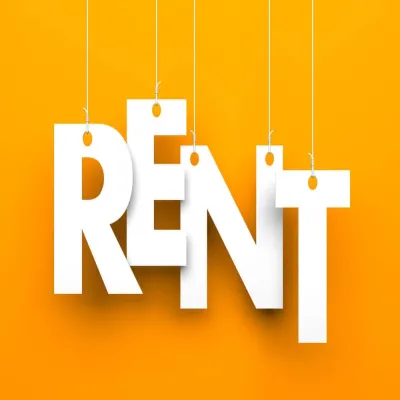Regarding dangerous animals in Turkey, we can reassure visitors and those considering permanent residence that there is no need for concern as the number of fatalities is quite low. Its size aside, all but the most dangerous of the country's animal population can be found in most of the nation; however, visit a national park or wildlife reserve to get up close and personal with those gargantuan animals, many of which are endangered.
In addition, since Turkey does not have crocodiles or sharks, neither of these species hide in the country's waterways. The biggest annoyance is the little, notorious mosquito that requires no kind of provocation at all. They do not, however, spread malaria, and local governments in many towns, cities, and villages spray repellent throughout the summer months, reducing the mosquito problem to half of what it was a few years ago.
Almost all of the animals found here are not threatening. Of course, if you receive one of those devastating wounds that are obvious, you should seek medical attention immediately, especially if there are some frenzied symptoms like nausea and vomiting, swelling, or brutal pain. But most of the time you won't be afraid of ferocious beasts. Enjoy the summers and the traditions and culture that go with it. But if you want to know about the deadliest creatures, keep reading.
What Animals Are Hazardous in Turkey?
1: Turkey's Venomous Snakes
Out of more than thirty species of snakes, most of the available ones in Turkey are vipers. Since most of these reclusive reptiles like grassy places, many people walking along it clap their hands to scare off any snakes that might be hiding in grassy places.
Some species are poisonous, however, they are much smaller than those found in Africa, such as pythons and cobras. The southeast is home to the majority of deadly snake bites, and unless you specifically search for them, you are unlikely to see one in a tourist region. If one is seen in a tourist town, it is most likely a little grass viper.
2: Unsettling Spiders
Ahh, the infamous spider, adored by some but despised by most. You will likely spot one, but stay away from it. The vast majority are harmless and don't bite, though there are some killing species and we should be afraid of them. The most common variety of spiders
is the jumping spider, which will bite when provoked, and though it's not poisonous, it's rather annoying than a threat.
According to available information, there are currently 19 species of spiders in this area, with the most deadly ones inhabiting the southeast. The camel, the yellow sac, and the black widow spider are among the ones to stay away from. Even though its poison isn't strong enough to kill, getting bitten by one nonetheless causes unpleasant symptoms.
3. Jellyfish Types
It was uncommon to get stung by a terrifying jellyfish ten or so years ago. These marine animals seldom attack people, but if they sense a surprise attack, their stinging venom from tentacles can sometimes paralyze, burn, or cause great pain. The number of jellyfish species has increased recently throughout Turkey's coastline, extending from the Northern Black Sea to the Mediterranean, due to fishing practices and climate change.
The most common kind is the nomad jellyfish, while moon jellyfish have also been sighted around Istanbul. If you should get stung, scrape the tentacles off with something else instead of your bare hands. See the doctor right away after bathing the wound with seawater.
4. Confronting Scorpions
Scorpions attack with their fangs, and the biting force varies depending on the species. Though this isn't supported by science, people in some areas painted windows and doors blue in the belief that it would fend off scorpions. The luridae, euscorpiidae, buthidae, and scorpionidae families contain 15 species of roaming scorpions, which are a threat to the nation. The southeast is usually the site of bites, with the Mediterranean and Aegean following suit. Bites usually occur in the summer, when the weather is dry and hot.
5: Centipedes Crawling
Although they are not the most hazardous animals and never kill, these little creatures can be found in rural places. When someone reports getting bitten, they claim it irritates them. They are sometimes seen in grassy and stone locations, and they appear to prefer the old stone houses from bygone eras that reside in little communities. If you discover one in your home, relocate it outside or, if you're concerned that its family may have migrated in with them, get a spray. Rest assured, though, as centipedes are not the deadliest or most hazardous creatures you will come across.
6. Mosquitoes
Although the mosquitoes do not pose a threat, they turn out to be the real villains in the narration.
You can get an insect repellent to save yourself from being devoured alive. The Turks also have two other deterrents: one is a simple pot of basil, and the other is a tennis racket-like device with batteries. The high-tech deterrent is much better because it seems to be more effective, and of course, gives some sports entertainment at night.
7. Street dogs as a breed of dog
These days, numerous restaurants and bars take care of the dogs, and the locals feed and maintain them. Sure, dogs can be an annoyance while you're trying to enjoy a meal or drink at a table.
Conclusion:
In general, little contact occurs with dangerous animals, particularly among the inhabitants of towns and cities, for the Turkish land is filled with wildlife, though that would also mean one wouldn't walk past such areas without checking them out.
Being careful and paying attention to your surroundings would surely reduce the risks associated with these dangerous encounters. Be well prepared, learn how to react during an emergency, and seek professional help the moment you get bitten or hurt by wildlife.
.webp&w=3840&q=100)















